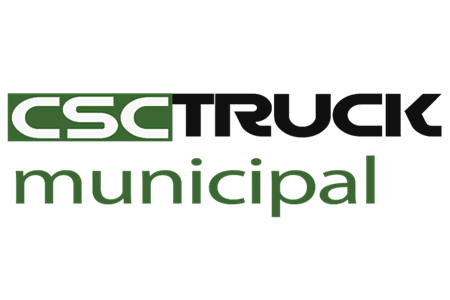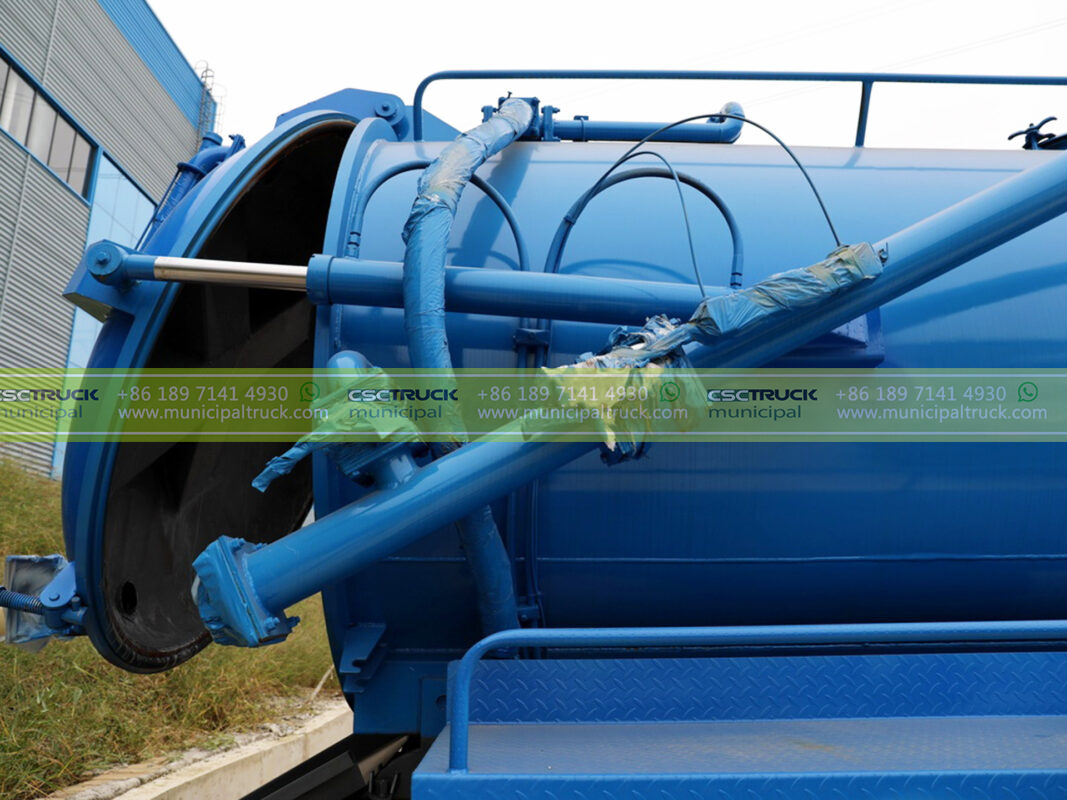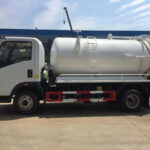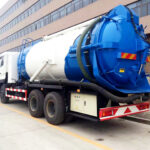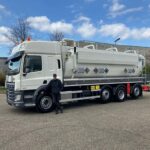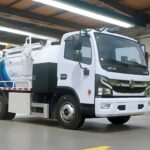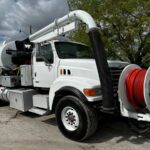Introduction: The High-Stakes Science of Odor Neutralization
In the labyrinth of urban infrastructure, sewer trucks, vacuum trucks, and municipal trucks perform a critical yet underappreciated role: containing the volatile organic compounds (VOCs), hydrogen sulfide (H2S), and mercaptans that transform wastewater management into a public health imperative. With tightening EPA emissions standards and growing community intolerance for nuisance odors, modern odor control systems have evolved into multidisciplinary feats of chemistry, mechanical engineering, and data analytics. These systems no longer merely mask smells—they annihilate them at the molecular level while adhering to stringent operational demands. This exploration dissects the technologies empowering today’s fleets to operate invisibly, ensuring both regulatory compliance and community goodwill.
1. Chemical Neutralization Systems: Precision Warfare Against Volatile Compounds
The Rise of Atomized Reactants and Catalytic Oxidation
At the frontline of odor suppression lie advanced chemical dosing systems engineered to neutralize malodorous gases before they escape containment:
- Automated pH-Adjusted Mist Injection:
Modern vacuum trucks deploy real-time pH sensors in tank headspaces, triggering misting nozzles to spray buffered chlorine solutions (pH 8.5–9.2) or potassium permanganate aerosols. These alkaline mists ionize H2S into odorless sulfate ions while oxidizing mercaptans. Systems like Vactor’s OdorVac™ achieve >90% H2S reduction by integrating flow-adjusted dosing pumps that calibrate chemical use to sludge viscosity and gas concentration. - Nano-Catalyst Infused Filter Media:
Hybrid systems in sewer trucks combine chemical absorption with catalysis. Filters embedded with titanium dioxide (TiO2) nanoparticles coated in noble metals (e.g., palladium) trigger photocatalytic oxidation when exposed to UV LED arrays. This breaks VOCs into CO2 and H2O without secondary pollutants—a critical advantage for municipalities banning quaternary ammonium compounds. - Closed-Loop Carbon Scrubbers:
For high-risk zones (near schools, hospitals), municipal trucks increasingly adopt sodium hydroxide (NaOH) scrubbers. Contaminated air passes through packed towers where NaOH reacts with H2S to form non-volatile sodium sulfide, while activated carbon layers adsorb residual VOCs. The Evoqua Sulfur-Rex® system regenerates scrubber media in situ, minimizing downtime.
2. Biological Filtration: Harnessing Microbial Consortia for Odor Digestion
From Bio-Trickling Filters to Enzymatic Breakdown
Biological solutions offer sustainable odor control by leveraging nature’s decomposers—a growing priority for ESG-focused municipalities:
- Bio-Trickling Filters with Engineered Biomes:
Compact bioreactors installed in vacuum truck vapor lines cultivate extremophile bacteria (e.g., Thiobacillus spp.) on structured plastic media. Contaminated air humidified to 95% RH passes through the biofilm, where microbes metabolize H2S into sulfuric acid at rates exceeding 50 g/m³/hr. Genetically optimized strains in systems like Biorem BT-1200 handle shock loads from septic sludge without biomass collapse. - Enzymatic Tank Coatings:
Proactive odor prevention starts at the tank surface. Epoxy liners infused with immobilized enzymes (e.g., methanethiol oxidase) catalyze VOC breakdown during transport. EnviroZyme’s OdorBanc™ coatings reduce headspace H2S by 72% while resisting abrasive solids—critical for sewer trucks handling grit-laden wastewater. - Phase-Change Biofilters for Cryogenic Conditions:
Northern operators face unique challenges: freezing temperatures inactivate traditional biofilters. Solutions like PureAir™ FrostGuard use phase-change materials (PCMs) in filter beds to maintain optimal microbial temperatures (-5°C to 40°C). Heat generated during VOC oxidation is stored in paraffin-based PCMs, ensuring continuous operation during -30°C collection routes.
3. Adsorption Technologies: Trapping Molecules in Precision-Engineered Labyrinths
Activated Carbon, Zeolites, and MOFs in Modular Systems
When immediate, broad-spectrum odor removal is non-negotiable, adsorption systems provide fail-safe redundancy:
- Activated Carbon Fiber (ACF) Cassettes:
Unlike granular carbon, ACF’s microporous structure (1–2 nm pores) offers 3x the surface area for adsorbing thiols and amines. Municipal trucks favor disposable ACF cartridges (e.g., Kuraray Carnauba®) with <2 Pa pressure drop, avoiding power-hungry blowers. Post-saturation, cartridges are incinerated in waste-to-energy plants, closing the waste loop. - Hydrophobic Zeolite Molecular Sieves:
Synthetic zeolites (e.g., ZSM-5) modified with silane coatings excel in high-humidity environments. Their uniform 0.55 nm pores selectively trap H2S while allowing water vapor passage—ideal for vacuum trucks in tropical climates. Regeneration via 150°C nitrogen backflush restores 98% capacity over 500 cycles. - Metal-Organic Frameworks (MOFs) for Targeted Capture:
MOFs like HKUST-1 and UiO-66, with tunable pore geometries, are entering pilot programs. Functionalized with copper or iron clusters, they chemisorb up to 20% their weight in VOCs. BASF’s Sorbead™ MOF modules claim 60% longer service life than carbon in sewer truck field trials.
4. Containment & Ventilation Engineering: Designing Out Odor Pathways
Negative Pressure, Sealed Systems, and Real-Time Leak Detection
Even the best treatment fails if gases escape containment. Modern trucks employ multi-layered physical barriers:
- Dual-Seal Manway Gaskets with RFID Monitoring:
Tank access points use EPDM/FKM composite gaskets pressured to 30 psi, with embedded RFID tags logging seal integrity. Operators receive alerts if torque on manway bolts drops below 80 Nm—a frequent failure point during hurried municipal truck operations. - AI-Powered Leak Detection Networks:
Arrays of MEMS-based H2S sensors (0.1 ppm resolution) map gas concentrations across the truck. Machine learning algorithms in systems like Scentroid’s DR1000 distinguish background odors from leaks, triggering localized ventilation. This slashes false alarms plaguing traditional area monitors. - Laminar Air Curtains at Loading Interfaces:
During hose coupling/uncoupling, turbulent airflow releases odor plumes. Solutions like Donaldson’s AirShield™ deploy 25 m/s laminar air curtains across hatch openings, creating particle-free zones. Paired with vacuum truck exhaust HEPA filters, this reduces neighborhood odor complaints by 89%.
5. Smart Fleet Integration: IoT and Predictive Analytics for Proactive Odor Management
From Reactive Scrubbers to Self-Optimizing Systems
The final frontier lies in integrating standalone technologies into adaptive, fleet-wide networks:
- Cloud-Based Odor Forecasting Models:
Municipalities like Copenhagen feed sewer truck GPS data, weather patterns, and historical complaint logs into AI models predicting odor dispersion. Trucks pre-activate biofilters or reroute based on wind direction—a strategy cutting reactive complaints by 64%. - Edge Computing for Real-Time Adaptive Dosing:
Onboard processors in vacuum trucks analyze gas sensor streams against 20+ parameters (sludge temperature, flow rate, humidity). Dynamic algorithms adjust chemical dosages within 50ms—critical when handling unpredictable septage from food processing plants. - Blockchain-Enabled Chemical Inventory Autonomy:
IoT-enabled chemical tanks self-monitor levels and purity, automatically placing orders via smart contracts when thresholds breach. Systems like Veolia’s ChemLogic™ ensure municipal trucks never face downtime from depleted odor suppressants. - Augmented Reality (AR) for Maintenance Precision:
Technicians servicing sewer truck biofilters use AR glasses overlaying real-time microbe activity maps and enzyme coating wear patterns. This slashes filter media replacement errors by 55%, maintaining peak odor control efficacy.
As urbanization intensifies and communities grow less tolerant of industrial intrusions, the humble municipal truck has become a testbed for technologies once confined to labs: CRISPR-tailored microbes, self-healing MOF adsorbents, and quantum sensor arrays. The next-generation vacuum truck won’t merely control odors—it will convert them into biofuels via onboard plasma reformers, transforming a public nuisance into a circular economy asset. For now, the convergence of these systems ensures that wastewater fleets operate not just efficiently, but imperceptibly, preserving the delicate social license that allows critical infrastructure to function unchallenged.
